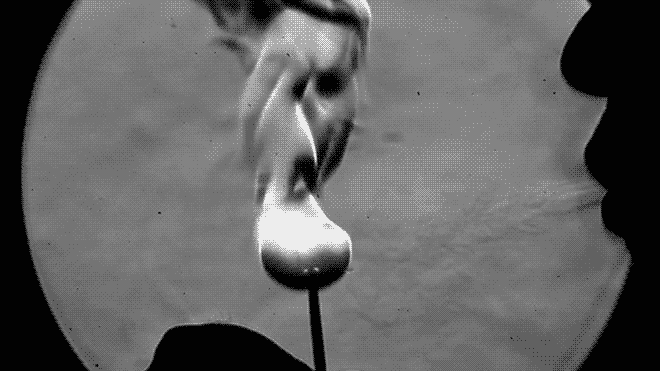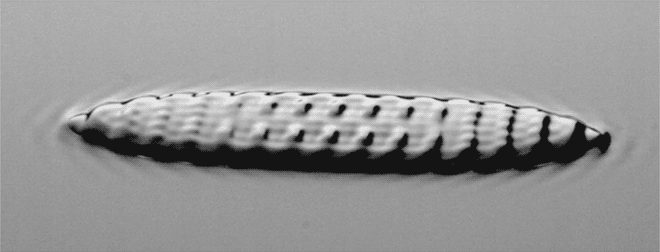SAN FRANCISCO—Fluid mechanics is the science of breaking waves, explosions, bubbles, ripples, clouds, and currents. So when editors of the Journal of Fluid Mechanics declared, in 1967, that their discipline was "photogenic," their vanity was justified.
That sense of self-love still pervades the field. So much so, that the centerpiece of the annual American Physical Society's Division of Fluid Dynamics meeting is a competition to see who made the most beautiful science that year. At the 2014 meeting, held here November 23-25, the contest featured nearly 100 video submissions.
The topics explored ranged from everyday fascinations—dogs lapping water, sloshing beer, and roiling clouds---to the esoteric, like a strangely zen-like movie of a laser beam obliterating an inkspot.
Jeffrey Koseff, a fluid dynamicist at Stanford University, is one of of the contest's organizers. He says that each year, he and his co-organizer select five fresh judges. "We try to be diverse, and pick from all career levels," he said. The judges are given latitude to pick whichever visualizations they like best, but are asked to judge based on four aspects: the novelty of the thing being visualized, the scientific value of the thing being explained, the technique used to make the visualization, and its overall beauty.
Visualization is important to any fluid dynamics research and has equal standing to numerical evidence within the field. "You can have all the numbers you want, but the visualization lets you know if what you're doing is real or junk," Koseff said. Students of the field are encouraged to take classes in data viz techniques, but most of their training comes on the job. Fluid dynamicists inevitably learns how to operate high speed cameras, set up lights, and use various chemical reactions to get the best view of their subjects.
The competition, which began in 1983, was inspired by a book that came out the year before, An Album of Fluid Motion by Milton Van Dyke. A Stanford professor, Van Dyke understood how important visualizations were to the field, but saw that there were no books showing all the basic ways that fluids move. He'd already set up his own publishing company, and was able to sell the book for $10, making it available to all students. Winners of the competition are given copies of the now out-of-print book.
The video contest has two prize categories, each with three equal winners. The more prestigious of the two is named after Van Dyke, and has a cash gift of $200. The second is simply called the Gallery of Fluid Motion award. The gallery above contains all six of this year's winners, plus my personal favorite, a visualization of roiling clouds created in a laboratory.


